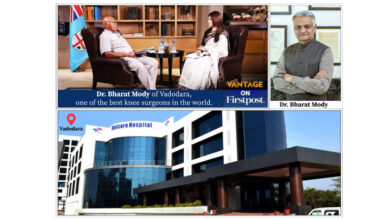MOM AND WORLD – Changing the landscape of the wellness & happiness of Mother & Baby in India

Handmade with love, naturally!
Pure, natural and honest products for moms and babies from Mom and World
Mumbai (Maharashtra), December 1: The age-old adage ‘It takes a village to raise a child’, remains as true today as it did generations ago. Unfortunately, however, it has become increasingly difficult to adopt in the modern world and the village often falls by the wayside.
Mom and World is dedicated to the welfare, happiness and overall well being of both mother and child, and the company believes that it can play a significant role in making motherhood, the defining experience in every woman’s life, a little bit less overwhelming, and a whole lot more memorable.
Founded by Sahil Mehta, an entrepreneur with significant experience and expertise in the beauty and wellness space, Mom and World is a cruelty-free, vegan and 100% natural brand, free from parabens and harsh chemicals. Sahil hails from a family of successful business people and after obtaining an MBA in Australia, spent several years focusing on the IT and e-commerce space. On his decision to move into the beauty and wellness space in India he says ‘I always wanted to start something back in India, and I wanted to provide the Indian consumers with the same high-quality luxury products as I had seen available overseas.’
As a firm believer in locally sourced and domestically produced goods, Sahil was particularly keen to create a range of products that were 100% made in India. Coupled with his interest in Ayurveda and natural ingredients and his knowledge of the beauty and skincare markets, his vision for Mom and World was a natural one.
Mom and World identified the need for high quality, natural and safe products for both baby and mother, and has been able to carve a niche for itself in the highly competitive Indian market. With the percentage of working mothers increasing rapidly, there is a huge growth potential in the baby care market with a projected CAGR of 14.02% between 2020-2025. Women are extremely discerning about the products they use for their children. As a true partner to women, and a way to make the challenges of motherhood just a little bit easier, Mom and World makes the decision about taking the best care of yourself and your precious baby an easy one to make.
With a range of shampoos, cleansers, creams, lotions and oils for mother and child, Mom and World is the ideal online solution for all your baby’s sensitive skin needs. In addition to carefully taking care of your little one, Mom and World makes sure that every new mother can easily access the products she needs to take care of herself as well.
Mom and World products are paraben-free, mineral oil-free, sulfate-free, phthalate-free, cruelty-free, vegan, botanical activity-based and PETA certified. They are 100% natural, adhere to the highest standards in terms of ingredients and aim to meet the needs of a national and international clientele. As part of PETA’S Beauty without Bunnies initiative, all Mom and World products are dermatologically tested and hypo-allergenic and display their full list of ingredients on the packaging to ensure transparency.
Speaking about his mission for the brand, Sahil Mehta says ‘We understand that pregnancy and parenting can be challenging, but mum-child skincare doesn’t have to be. It can be hectic to choose the perfect products for your baby’s sensitive skin, so we formulate all our products with only the best and most natural ingredients keeping in mind the child’s and the mother’s skincare needs.’
In addition to Mom and World, which has a Gross Turnover of Rs. 100 crore for FY 20-21, a significant increase from a Rs.67 crore turnover for FY 19-20, Sahil Mehta has founded St Botanica, Man Arden, Oriental Botanics and MuscleXP under the umbrella of his company Emmbros Overseas, which is a consumer-focused and market-driven health, beauty and wellbeing.




